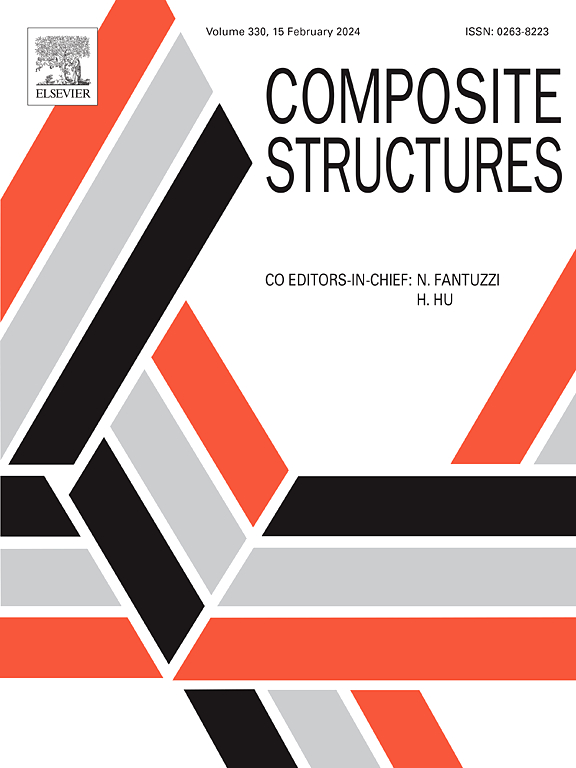通过光固化三维打印技术制造的金刚石型三重周期性最小表面结构的力学性能
IF 6.3
2区 材料科学
Q1 MATERIALS SCIENCE, COMPOSITES
引用次数: 0
摘要
三周期最小表面(TPMS)结构因其光滑的表面构造和参数建模特性而备受关注。本研究采用光固化三维打印技术生成金刚石型 TPMS 结构,并通过显微 CT 扫描发现三维打印 TPMS 结构内部存在缺陷。研究探讨了两个关键的设计变量:体积分数和单元尺寸。为了深入研究三维打印 TPMS 结构的压缩特性和能量吸收能力,还进行了准静态压缩实验。研究结果表明,增加体积分数可显著提高 TPMS 结构的压缩模量、极限强度和能量吸收能力。此外,增大单元尺寸还能改善单位体积的压缩性能和能量吸收能力。为了预测体积分数和单元尺寸对 TPMS 结构压缩性能的耦合效应,建立了一个二元二次回归模型。此外,还对 TPMS 结构进行了加载-卸载循环实验,揭示了循环加载过程中残余应变和滞后能的演变规律。该研究为各种工程应用中可重复使用且抗疲劳的金刚石型 TPMS 结构的设计提供了启示。本文章由计算机程序翻译,如有差异,请以英文原文为准。
Mechanical properties of diamond-type triply periodic minimal surface structures fabricated by photo-curing 3D printing
Triply periodic minimal surface (TPMS) structures have attracted significant attention owing to their smooth surface configuration and parametric modeling properties. In this study, photo-curing 3D printing was employed to generate diamond-type TPMS structures, and micro-CT scanning revealed the presence of internal defects within the 3D printed TPMS structures. Two key design variables were explored: volume fraction and unit cell size. Quasi-static compression experiments were conducted to delve into the compression properties and energy absorption capabilities of the 3D printed TPMS structures. The findings reveal that increasing the volume fraction significantly enhances the compressive modulus, ultimate strength, and energy absorption capacity of TPMS structures. Additionally, increasing the cell size improves compression properties and energy absorption per unit volume. To predict the coupling effect of volume fraction and unit cell size on the compression performance of TPMS structures, a bivariate quadratic regression model was established. In addition, TPMS structures were subjected to load-unload cyclic experiments, shedding light on the evolution patterns of residual strain and hysteresis energy during cyclic loading. It provides insights into the design of reusable and fatigue-resistant diamond-type TPMS structures for various engineering applications.
求助全文
通过发布文献求助,成功后即可免费获取论文全文。
去求助
来源期刊

Composite Structures
工程技术-材料科学:复合
CiteScore
12.00
自引率
12.70%
发文量
1246
审稿时长
78 days
期刊介绍:
The past few decades have seen outstanding advances in the use of composite materials in structural applications. There can be little doubt that, within engineering circles, composites have revolutionised traditional design concepts and made possible an unparalleled range of new and exciting possibilities as viable materials for construction. Composite Structures, an International Journal, disseminates knowledge between users, manufacturers, designers and researchers involved in structures or structural components manufactured using composite materials.
The journal publishes papers which contribute to knowledge in the use of composite materials in engineering structures. Papers deal with design, research and development studies, experimental investigations, theoretical analysis and fabrication techniques relevant to the application of composites in load-bearing components for assemblies, ranging from individual components such as plates and shells to complete composite structures.
 求助内容:
求助内容: 应助结果提醒方式:
应助结果提醒方式:


